Table of Contents (click to expand)
Mountains do not sink into the mantle because of isostasy. The earth’s crust is far less dense than the mantle.
Have you ever seen an iceberg floating in the Arctic Ocean? Or more commonly, ice cubes floating in a glass of soda? You probably know that this happens because liquid water has greater density than solid ice. However, you may have also observed that the thicker chunks rise higher above the water than the thin ones. This is buoyancy putting an upward force on any object immersed in a liquid. Buoyancy is the opposing force sensed by a body that is partially or completely submerged in a fluid.
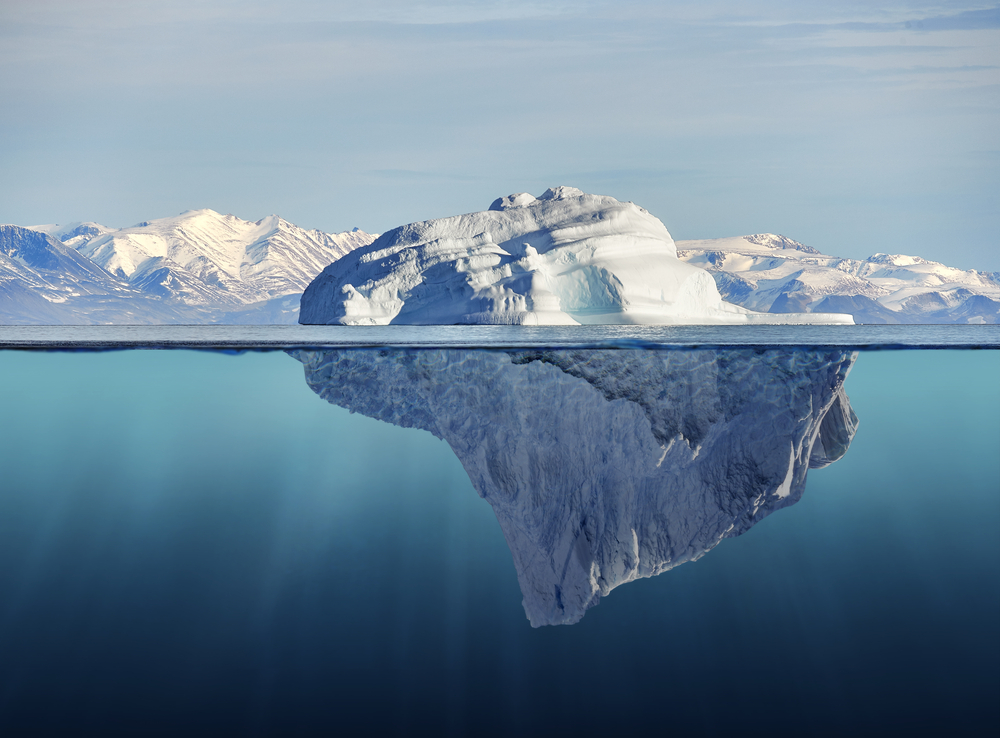
The different layers of the earth act in a similar way. The uppermost mantle is linked to the crust to create the lithosphere. The asthenosphere is the region of the mantle underneath the lithosphere, upon which the lithosphere somewhat floats. The asthenosphere is plastic and may move like a fluid. Just as a wooden block floats on water, varying thicknesses of the lithosphere will displace different quantities of the asthenosphere and “float”.
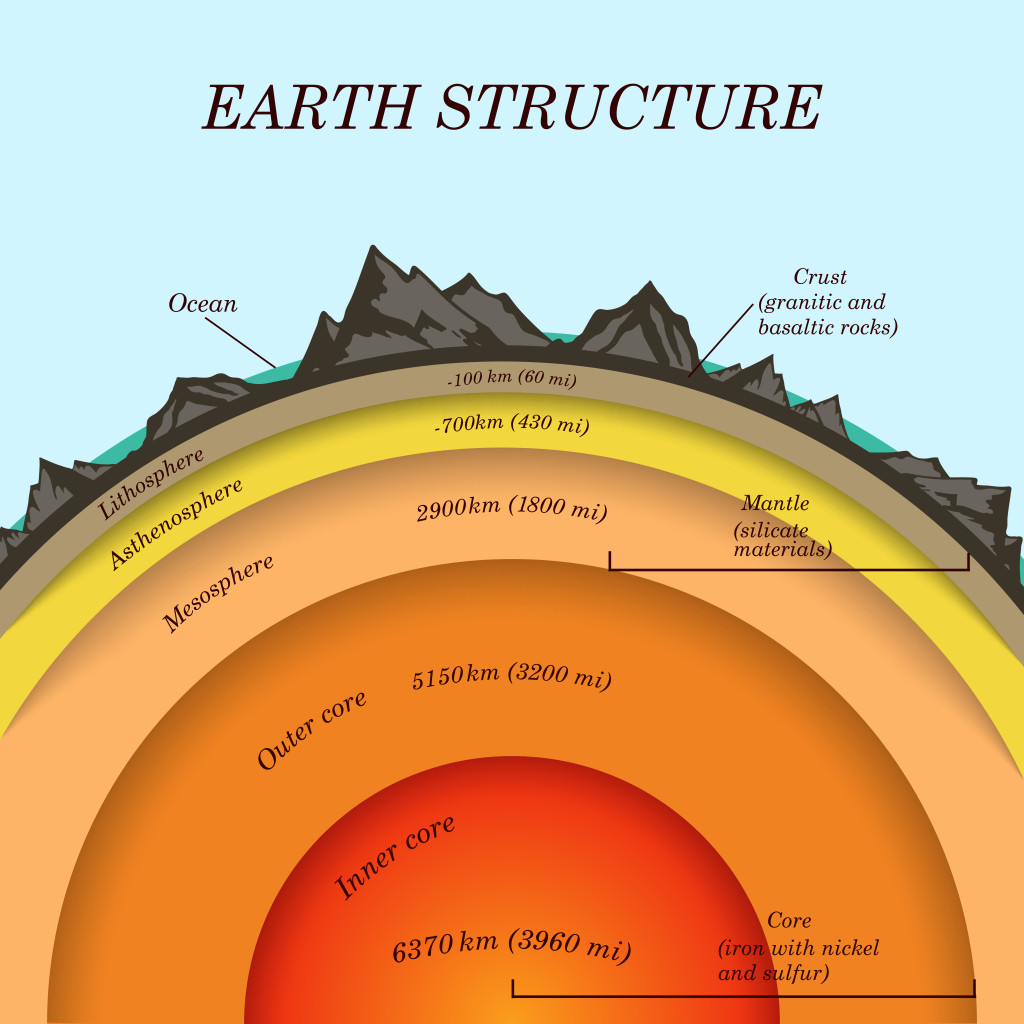
This is explained using an important theory in geology called the principle of isostasy. It is the notion that the thinner crust must float on top of the more dense mantle. Isostasy governs the height of continental land surfaces and the depth of ocean basins.
When the gravitational force pulling down on the lithosphere equals the buoyant force of the mantle pushing up on it, the Earth’s surface is said to be in isostatic equilibrium. A mountain range sits higher than the marine crust because it is thicker than the lithosphere.
There are two major hypotheses about how isostasy works to sustain mountain masses.
Airy’s Isostasy
According to Sir George Airy, lighter matter on the earth below balances the mountains’ huge weight. The crust, which is made of lighter material, is resting on a substratum of much denser material. Similar to how a ship hovers in water with its large base submerged in the water, the Himalayas similarly “float” in the denser magma with its largest portion sunk into it.
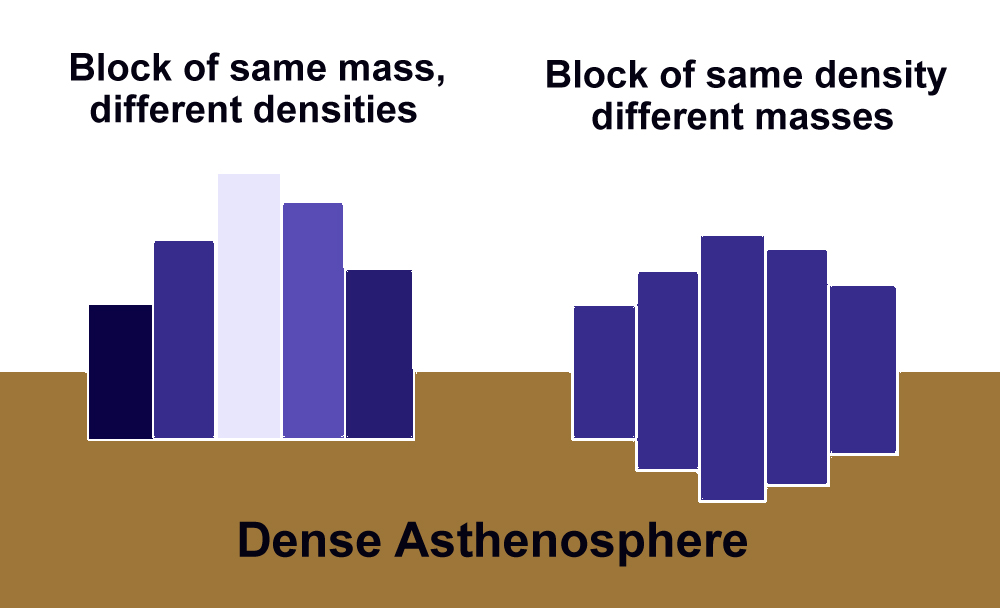
Airy emphasized that the Himalayas were exhibiting their true attraction power because the substratum has a lengthy root of lightweight material that balances the mass above. He said that if the surface column above the substratum were larger, a bigger portion of it would be buried in the substratum.
If it were smaller, a smaller chunk would be submerged. He asserted that there is no change in the density of the various land columns (mountains, plateaus, and plains), which instead suggests constant density with a difference in thicknesses.
Also Read: Will The Continents Ever Sink Inside The Molten Magma?
Pratt’s Isostasy
His hypothesis postulates that the density of material in the crust varies depending on the height of the crustal layers. Mountainous regions have lower densities than plateaus, plateaus have lower densities than plains, and the ocean floor is the densest. The blocks composed of lightweight materials are therefore located at a greater height than those built of denser materials. In essence, you can suppose that lighter matter is situated beneath mountains and heavier material is found below seas.
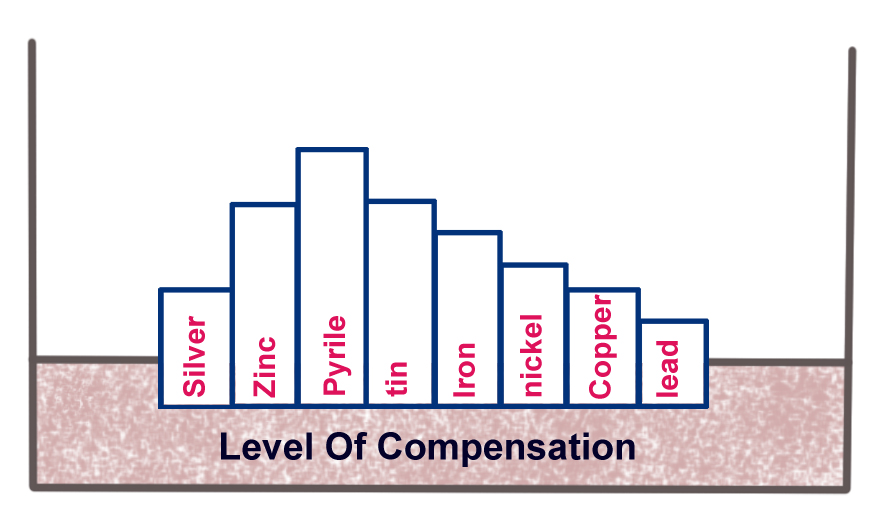
The term “level of compensation” refers to a line that divides the top blocks from the deeper dense rocks at a constant depth. There is no difference in density below this level.
Also Read: What Is The Continental Drift Theory And How Is It Related To Plate Tectonics?
Isostatic Adjustments
Mountain formation begins its final phase upon the completion of plate convergence. Isostatic rebound induces crustal elevation during this stage. The continental crust, which is afloat in the plastic upper mantle, moves vertically as a result of the isostatic rebound. When the mass from the mountaintop is washed away by erosion, the load on the crust decreases. The continental crust performs an “isostatic adjustment”, which causes it to rise vertically (float higher) in the mantle.
Let’s try to understand this a bit more clearly. Wood floats on water, but thicker blocks protrude more from the water’s surface than thinner chunks.
However, the thicker slabs also stretch to a greater depth in the water than the thinner ones. You may consider the submerged portion of a wooden block to be its root. Consider what might happen if one of the wooden slabs was topped with a second piece of wood. The block would then try to find a new isostatic (gravitational) equilibrium. The joined block’s bottom would now be lower, while its peak would be taller than it previously was. “Isostatic adjustment” refers to this process of achieving a new gravitational equilibrium level.
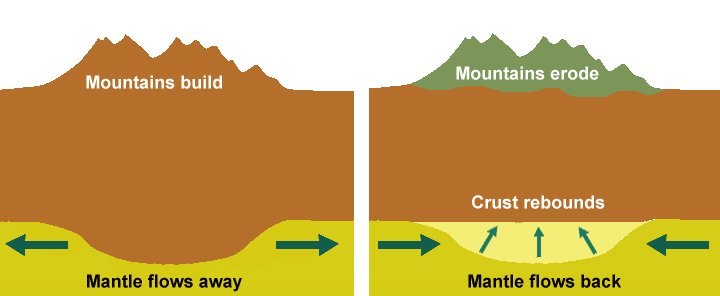
Remember that isostasy is neither an event nor a force. Simply said, pieces of crust with varying thicknesses maintain a natural equilibrium or adjustment pattern that keeps gravity in place and our mountain vistas consistent!
In summary, a mountain cannot sink because isostasy requires it to keep floating in the denser asthenosphere.
How well do you understand the article above!

References (click to expand)
- The Theory of Isostasy - Prof. Robert B. Laughlin. Stanford University
- Chapter 9 (Large-scale Gravity and Isostasy). University of Nevada, Las Vegas
- AB WATTS. (2001) Isostasy and Flexure of the Lithosphere. University of Wyoming
- Watts, A. B. (2021). Isostasy. Encyclopedia of Solid Earth Geophysics. Springer International Publishing.
